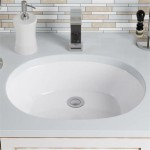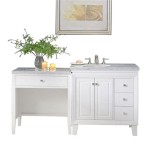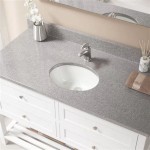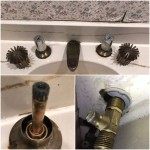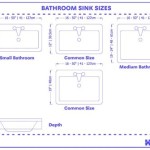I Have Tiny Black Ants In My Bathroom: Understanding and Addressing the Infestation
The discovery of tiny black ants in a bathroom is a common household concern. These ants, often referred to as sugar ants, are drawn to the moist environment and readily available food sources typically found in bathrooms. While their presence may seem insignificant initially, a small infestation can quickly escalate, requiring prompt and effective intervention. Understanding the reasons behind their presence, identifying the specific type of ant, and implementing appropriate control measures are crucial for eliminating the problem and preventing its recurrence.
The presence of ants, regardless of their size, signals a potential issue within the home environment. These issues often relate to sanitation, moisture control, or the structural integrity of the building. Ignoring the problem can lead to more severe infestations, property damage, and potential health concerns. This article aims to provide a comprehensive guide to understanding why tiny black ants infest bathrooms, how to identify them, and the steps necessary to eradicate them effectively.
Why are Tiny Black Ants Attracted to Bathrooms?
Bathrooms present a confluence of factors that make them highly attractive to ants. Several key elements contribute to this attraction:
Moisture: Ants require water to survive, and bathrooms are often abundant with moisture from showers, sinks, and leaky pipes. Even seemingly minor condensation on surfaces can provide a sufficient water source for these pests. The humidity levels in bathrooms also tend to be higher than in other areas of the house, creating a favorable environment for them.
Food Sources: Although bathrooms are not typically thought of as food preparation areas, they can still harbor food sources for ants. These include sugary residue from hairspray, lotions, and toothpaste, as well as organic matter like shed skin cells and hair. Even the smallest crumbs or spills can attract ants and sustain their colonies. Additionally, drains in sinks and showers can accumulate organic debris that serves as a food source.
Shelter: Bathrooms often provide hidden cracks and crevices where ants can nest. These can include gaps around plumbing fixtures, behind tiles, under sinks, and within wall voids. The dark, undisturbed nature of these spaces makes them ideal nesting sites. The close proximity to both water and food sources makes these bathroom nests particularly attractive.
Access Points: Ants can enter bathrooms through a variety of entry points, including cracks in walls or floors, gaps around pipes, and even through open windows or doors, especially if exterior vegetation is close to the building. Their small size allows them to exploit even the tiniest openings to gain access to the interior.
Identifying the Tiny Black Ants in the Bathroom
Accurately identifying the specific type of ant infesting the bathroom is crucial for implementing the most effective control strategies. While several ant species may appear similar in size and color, their behaviors and food preferences can differ significantly. The most common types of tiny black ants found in bathrooms include:
Odorous House Ants: These ants are small (approximately 1/8 inch long) and dark brown to black in color. They are named for the distinctive coconut-like or rotten smell they emit when crushed. Odorous house ants are highly adaptable and forage widely for food, including sweets, grease, and protein. They are attracted to moisture and often nest in walls, under floors, and near water sources. Multiple queens are common in odorous house ant colonies, making them particularly challenging to eradicate.
Pavement Ants: Slightly larger than odorous house ants (around 1/8 to 3/16 inch long), pavement ants are dark brown to black and have parallel ridges on their head and thorax. They typically nest under sidewalks, driveways, and building foundations, but can venture indoors in search of food and water. Pavement ants are omnivorous and will consume a wide variety of foods, including sweets, meats, and grease. They are often seen trailing along cracks in the pavement or along baseboards inside buildings.
Pharaoh Ants: These ants are small (about 1/16 inch long) and yellowish-brown in color. They are known for their ability to establish multiple colonies within a single building, making them notoriously difficult to control. Pharaoh ants are attracted to a wide range of foods, including sweets, grease, and proteins, and are particularly fond of sugary substances. They can nest in walls, behind baseboards, and in other hard-to-reach areas. Their small size allows them to access even the smallest cracks and crevices.
Carpenter Ants: While carpenter ants are usually larger than the typical "tiny black ant," smaller worker ants can sometimes be mistaken for other species. Carpenter ants are typically black or dark brown and range in size from 1/4 to 3/4 inch long. They do not eat wood but rather excavate it to create nests. Their presence in a bathroom can indicate moisture damage to the wooden structure of the building, such as around bathtubs or showers. Sawdust-like material (frass) near suspected nesting sites is a key indicator of carpenter ant activity.
Careful observation of the ants' size, color, and behavior can help in identifying the species. If precise identification is difficult, consulting with a pest control professional is recommended.
Effective Strategies for Eliminating Ants in the Bathroom
Once the ants have been identified, implementing effective control strategies is crucial to eliminate the infestation and prevent its recurrence. A multi-faceted approach is often necessary to achieve lasting results.
Source Reduction: Eliminating the factors that attract ants to the bathroom is essential. This includes:
Moisture Control: Repairing leaky faucets and pipes, sealing cracks around showers and tubs, and ensuring proper ventilation to reduce humidity are crucial steps. Regular cleaning of shower stalls and sinks to remove soap scum and other organic debris can also help.
Sanitation: Regularly cleaning the bathroom to remove food residues, such as toothpaste, hairspray, and lotions, can eliminate potential food sources. Emptying trash cans frequently and storing food items in airtight containers will also prevent ants from being attracted to the area.
Sealing Entry Points: Inspecting the bathroom for cracks and crevices and sealing them with caulk or other appropriate materials can prevent ants from entering the area. Paying particular attention to areas around pipes, windows, and doors is important.
Baiting: Ant baits are highly effective for controlling ant infestations because they allow the ants to carry the insecticide back to the colony, thus eliminating the entire population. It is crucial to use the correct type of bait for the specific ant species. Sugar-based baits are effective for ants that prefer sweets, while protein-based baits are better for ants that prefer protein sources. Place baits in areas where ants are frequently seen, such as along baseboards, near cracks, and under sinks. Avoid spraying insecticides near bait stations, as this can deter ants from feeding on the bait.
Insecticides: Insecticides can be used to kill ants on contact, but they are generally less effective than baits for eliminating entire colonies. Insecticides should be used sparingly and only as a supplemental treatment. When using insecticides, follow the manufacturer's instructions carefully and take precautions to protect yourself, children, and pets. Consider using natural or organic insecticides as an alternative to synthetic chemicals, especially in areas where children or pets may come into contact with the treated surfaces.
Professional Pest Control: In cases of severe infestations or when DIY methods prove ineffective, contacting a professional pest control service is recommended. Professional exterminators have the knowledge, experience, and equipment to identify the ant species accurately, locate the nest or nests, and implement the most effective control strategies. They can also provide advice on preventing future infestations.
Prevention: Once the ant infestation has been eliminated, taking steps to prevent its recurrence is crucial. Maintaining a clean and dry bathroom environment, sealing entry points, and regularly monitoring for signs of ant activity can help prevent future problems. Consider using natural repellents, such as essential oils like peppermint or tea tree oil, to deter ants from entering the bathroom.
Effective ant control requires patience and persistence. It may take several weeks or even months to completely eliminate an infestation, especially in cases where multiple colonies are present or the nest is difficult to locate. Regular monitoring and preventative measures are essential to ensure long-term success.

Are Ants Attracted To Your Bathroom Terminix

Boise Idaho Pest Control Pestcom

How To Stop Ants From Invading Your Bathroom Identification And Prevention Tips Tabor Pest Control

How To Get Rid Of Little Black Ants In Your Bathroom Housekeeping Wonderhowto

How To Get Rid Of Sugar Ants John Moore Services

Boise Idaho Pest Control Pestcom

Niagara Pest Control Why Are There Carpenter Ants In The Bathroom

Why Tiny Ants Have Invaded Your House And What To Do About It

Why Do I Have Hundreds Of Tiny Ants All Over My Kitchen

How To Get Rid Of Ants A Complete Guide 2024
Related Posts
